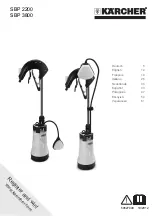
Page 7
LHT/LDT024, 036, 048, 060
Condensate Drains
Make drain connection to the drain coupling provided on
unit. Older model units have a 3/4” N.P.T. coupling and
newer model units have a 1” N.P.T. coupling.
Note - The drain pan is made with a glass reinforced
engineered plastic capable of withstanding typical joint
torque but can be damaged with excessive force. Tighten
pipe nipple hand tight and turn an additional quarter turn.
A trap must be installed between drain connection and an
open vent for proper condensate removal. See figure 5 or
6. It is sometimes acceptable to drain condensate onto
the roof or grade; however, a tee should be fitted to the
trap to direct condensate downward. The condensate line
must be vented. Check local codes concerning
condensate disposal. Refer to pages 1 and 2 for
condensate drain location.
FIGURE 5
ÁÁ
ÁÁ
ÁÁ
ÁÁ
ÁÁ
ÁÁ
ÁÁ
ÁÁ
ÁÁ
ÁÁ
ÁÁ
ÁÁ
ÁÁ
ÁÁ
ÁÁ
UNIT
Minimum Pitch
1” (25 mm) per
10' (3 m) of line
MOUNTING
FRAME
OPEN VENT
CONDENSATE SIDE DRAIN CONNECTION
NOTE - Allow clearance to
open doors when installing
condensate piping.
CAULK AROUND CONDENSATE COUPLING
FIGURE 6
UNIT
Minimum Pitch
1” (25 mm) per 10'
(3 m) of line
MOUNTING
FRAME
CONDENSATE BOTTOM DRAIN CONNECTION
OPEN VENT
CAULK AROUND
CONDENSATE COUPLING
DRAIN PAN
Units are shipped with the drain coupling facing the front
of the unit. Condensate can be drained from the back or
bottom of the unit with the following modifications. The
unit can be installed in either downflow or horizontal air
discharge regardless of condensate drain location.
Rear Drain Connection
1- Remove the condensate drain mullion. See figure 7.
Remove the two panels on each side of the mullion.
FIGURE 7
CONDENSATE
DRAIN MULLION
Two hinge screws must be removed in addition to the
mullion screws. See figure 8.
FIGURE 8
CONDENSATE
DRAIN MULLION
REMOVE
TWO
SCREWS
UNITS WITH HINGED PANELS
2- Lift the front edge of the drain pan and slide pan out
FIGURE 9
REMOVE DRAIN PAN
DRAIN PAN








































